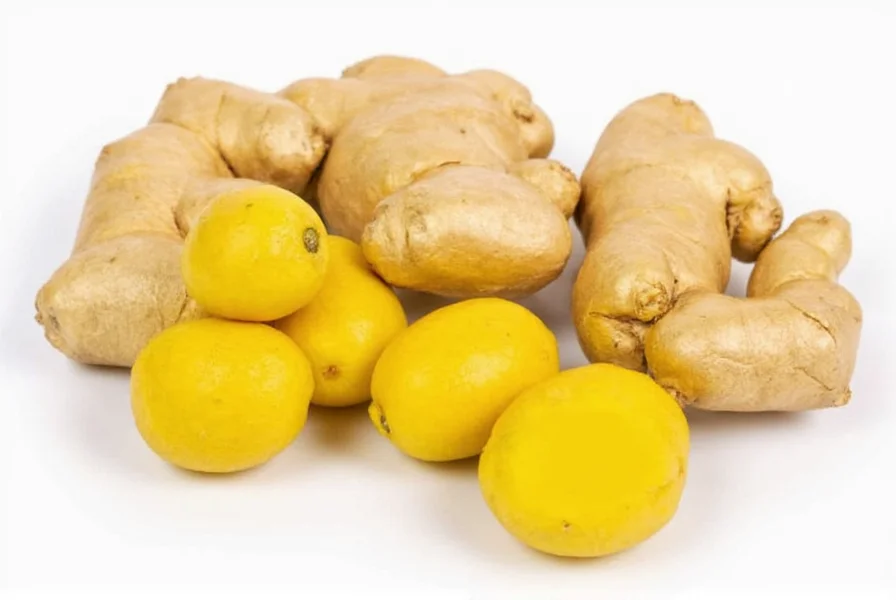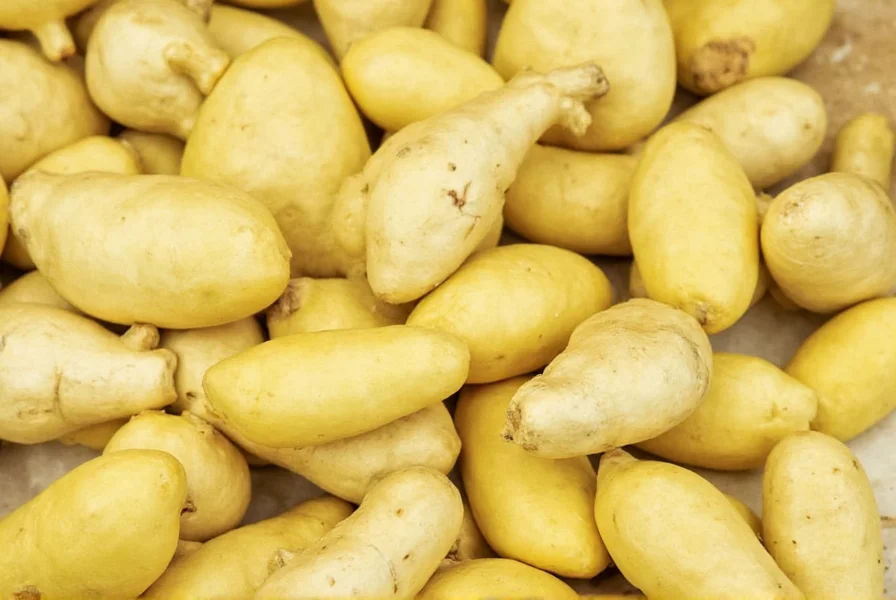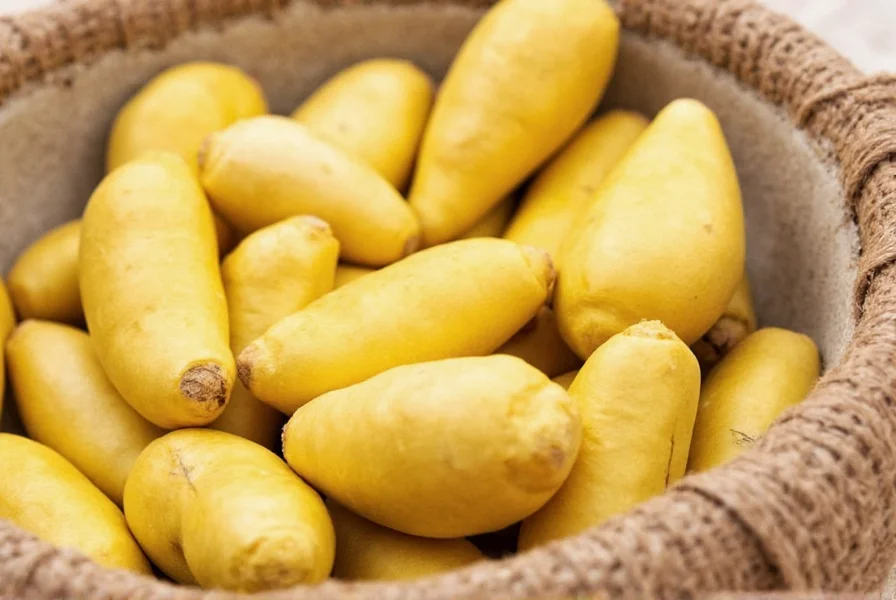The best way to store fresh ginger is to keep unpeeled ginger root in an airtight container lined with a paper towel in the refrigerator's vegetable drawer, which maintains freshness for 3-4 weeks. For longer preservation, freezing ginger whole or pre-grated in portions extends usability up to 6 months without flavor degradation.
Proper ginger storage prevents mold growth, maintains pungent flavor, and reduces food waste. Many home cooks struggle with ginger spoiling too quickly, but with the right techniques, you can keep this versatile root fresh for weeks. Understanding the science behind ginger preservation helps you choose the optimal method for your cooking habits and kitchen setup.
Why Ginger Spoilage Occurs and How to Prevent It
Ginger deteriorates through three primary mechanisms: moisture loss causing shriveling, mold development from excess humidity, and enzymatic breakdown reducing flavor compounds. The rhizome's high moisture content (approximately 80%) makes it particularly vulnerable to these processes. Unlike many root vegetables, ginger lacks a thick protective skin, requiring specific storage approaches to maintain quality.
Temperature control proves critical in ginger preservation. Research from food science journals indicates that ginger stored at 40-45°F (4-7°C) with 85-90% relative humidity maintains optimal quality. This explains why standard refrigerator conditions often fall short—they're typically too cold and dry for ginger's needs. The vegetable drawer provides slightly higher humidity, making it the ideal refrigerator location.
Comprehensive Ginger Storage Methods Compared
| Storage Method | Shelf Life | Flavor Retention | Best For | Key Requirements |
|---|---|---|---|---|
| Refrigerator (airtight container) | 3-4 weeks | Excellent | Most home users | Unpeeled root, paper towel, sealed container |
| Freezer (whole) | 6 months | Excellent | Long-term storage | Whole unpeeled root, freezer bag |
| Freezer (grated) | 6 months | Very Good | Frequent cooking | Pre-grated portions, ice cube tray |
| Water Storage | 1-2 weeks | Good | Immediate use | Submerged in water, daily changes |
| Room Temperature | 1 week | Fair | Very short-term | Cool, dark place |
Step-by-Step Guide to Optimal Ginger Preservation
Refrigeration Method for Weekly Use
This best way to store fresh ginger for regular cooking involves simple preparation:
- Keep ginger unpeeled to preserve natural protective layer
- Place in a glass or plastic container with tight-fitting lid
- Add a dry paper towel to absorb excess moisture
- Store in vegetable drawer away from ethylene-producing fruits
- Check weekly and replace paper towel if damp
This method works because the paper towel manages humidity while the airtight container prevents odor absorption. Professional chefs recommend this approach for maintaining ginger's volatile oils responsible for its distinctive flavor.
Freezing Techniques for Long-Term Storage
For those seeking how to store fresh ginger for months, freezing proves most effective. Two approaches yield excellent results:
Whole Root Freezing: Place unpeeled ginger in freezer bags, removing as much air as possible. When needed, grate frozen ginger directly—no thawing required. The skin protects against freezer burn while allowing easy removal after grating.
Pre-Grated Freezing: Grate fresh ginger and portion into ice cube trays. Cover with water or oil, freeze, then transfer cubes to labeled freezer bags. This method provides ready-to-use ginger portions ideal for soups, stir-fries, and baking.

Common Ginger Storage Mistakes to Avoid
Many home cooks unknowingly shorten ginger's shelf life through these errors:
- Washing before storage: Excess moisture accelerates mold growth. Only wash ginger immediately before use.
- Using plastic bags without ventilation: Traps ethylene gas and moisture, creating ideal mold conditions.
- Storing near onions or potatoes: These release gases that cause ginger to sprout prematurely.
- Keeping ginger in original store packaging: Perforated mesh bags allow too much air exposure.
Identifying Spoiled Ginger: Safety Guidelines
Knowing when ginger has gone bad prevents foodborne illness. Discard ginger showing any of these signs:
- Mold growth (fuzzy spots in white, green, or black)
- Soft, mushy texture when pressed
- Darker yellow interior with gray rings
- Sour or unpleasant odor
Slightly wrinkled ginger remains safe if firm and aromatic. However, any mold penetration means discarding the entire piece, as roots can harbor invisible mold networks. This differs from surface mold on hard cheeses where cutting away affected areas remains safe.

Specialized Storage for Different Ginger Forms
The best storage method varies depending on ginger preparation:
- Whole roots: Refrigerate unpeeled in airtight container (3-4 weeks)
- Sliced ginger: Submerge in sherry or vinegar in refrigerator (3 weeks)
- Grated ginger: Freeze in oil portions (6 months)
- Ginger paste: Refrigerate with thin oil layer on surface (2 weeks)
Professional kitchens often store ginger in neutral-flavored oils, which both preserves the root and creates instant ginger-infused cooking oil. This method works particularly well for frequent users of small ginger quantities.
Maximizing Ginger Freshness: Pro Tips
Extend your ginger's usability with these expert techniques:
- Store ginger root with the knob end (where new growth emerges) facing down to slow sprouting
- Place a silica gel packet in the container to regulate moisture without chemical exposure
- For cut pieces, rub cut surfaces with lemon juice before refrigerating to prevent oxidation
- Rotate ginger pieces weekly to prevent consistent pressure points that cause bruising
Understanding how to store fresh ginger properly transforms this common kitchen staple from a frequently wasted ingredient to a reliably available flavor enhancer. The refrigerator method with paper towel provides the best balance of convenience and longevity for most home cooks, while freezing serves those who cook with ginger regularly but in small quantities.
Frequently Asked Questions
Can I store ginger at room temperature?
Ginger can be stored at room temperature for up to one week in a cool, dark place with good air circulation. However, refrigeration significantly extends freshness and prevents mold growth. Room temperature storage works best for immediate use but isn't recommended for longer preservation.
Should I peel ginger before storing?
No, you should not peel ginger before storing. The skin protects against moisture loss and mold. Only peel ginger immediately before use. Keeping ginger unpeeled during storage maintains its protective barrier and extends shelf life significantly.
How do I know if stored ginger is still good to use?
Fresh ginger should feel firm when pressed, have a spicy aromatic scent, and show no visible mold. Slightly wrinkled skin is acceptable if the root remains hard. Discard ginger that's soft, mushy, has dark spots inside, or shows any mold growth, as these indicate spoilage.
Can I freeze ginger without losing flavor?
Yes, freezing is one of the best methods to preserve ginger's flavor. When frozen whole or grated, ginger maintains its pungent compounds for up to 6 months. The texture changes slightly when thawed, but frozen ginger works perfectly for cooking—many chefs prefer grating it directly from frozen.
Why does my refrigerated ginger develop mold so quickly?
Ginger develops mold in the refrigerator when exposed to excess moisture. Common causes include washing before storage, using non-ventilated containers, or failing to replace damp paper towels. To prevent mold, store unpeeled ginger in an airtight container with dry paper towel, and check weekly for moisture buildup.











 浙公网安备
33010002000092号
浙公网安备
33010002000092号 浙B2-20120091-4
浙B2-20120091-4